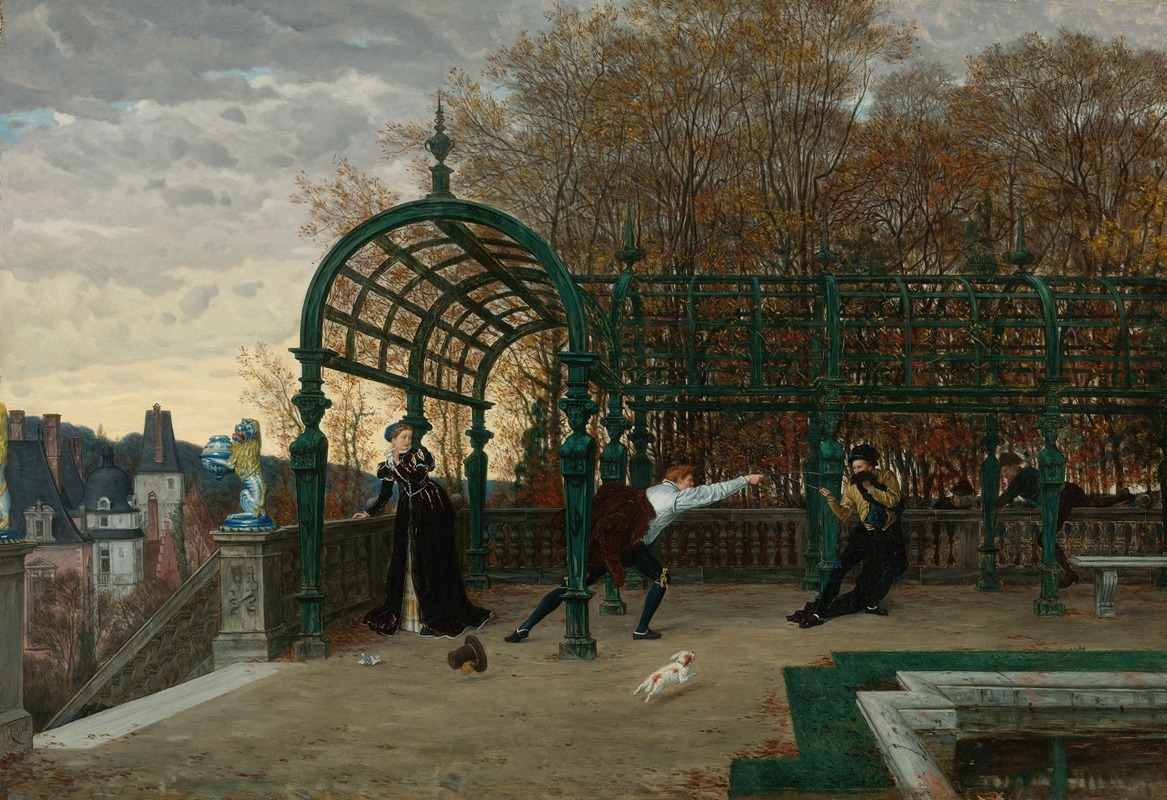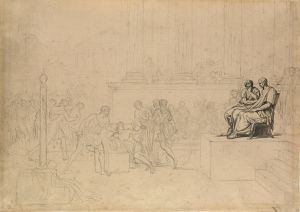
Tentative D’enlèvement
A hand-painted replica of James Tissot’s masterpiece Tentative D’enlèvement, meticulously crafted by professional artists to capture the true essence of the original. Each piece is created with museum-quality canvas and rare mineral pigments, carefully painted by experienced artists with delicate brushstrokes and rich, layered colors to perfectly recreate the texture of the original artwork. Unlike machine-printed reproductions, this hand-painted version brings the painting to life, infused with the artist’s emotions and skill in every stroke. Whether for personal collection or home decoration, it instantly elevates the artistic atmosphere of any space.
James Tissot's painting "Tentative D’enlèvement," translated as "Attempted Abduction," is a notable work by the French painter renowned for his detailed and often narrative-driven compositions. Tissot, whose full name was Jacques Joseph Tissot, was born on October 15, 1836, in Nantes, France, and became a prominent figure in both French and British art circles during the latter half of the 19th century.
"Tentative D’enlèvement" was created during a period when Tissot was deeply engaged with themes of modern life and society. His works often depicted scenes of contemporary life with a keen eye for detail and a narrative style that invited viewers to ponder the stories behind the images. This particular painting is no exception, as it captures a moment of high drama and tension.
The painting portrays a scene of an attempted abduction, a subject that suggests intrigue and suspense. Tissot's skillful use of composition and color draws the viewer into the unfolding drama, highlighting his ability to convey emotion and narrative through visual art. The figures in the painting are rendered with Tissot's characteristic attention to detail, showcasing his talent for capturing the nuances of fashion and expression that were hallmarks of his work.
Tissot's career was marked by his move to London in 1871, following the Franco-Prussian War and the upheaval of the Paris Commune. In London, he became associated with the Aesthetic Movement and gained popularity for his depictions of fashionable society. His works from this period often reflect the social dynamics and cultural milieu of Victorian England, characterized by a blend of elegance and moral complexity.
"Tentative D’enlèvement" fits within Tissot's broader oeuvre, which frequently explored themes of love, social interaction, and the complexities of human relationships. His paintings often featured women as central figures, depicted with a sense of agency and individuality that was somewhat progressive for the time.
Throughout his career, Tissot was known for his technical proficiency and his ability to capture the subtleties of light and texture. His work was well-received by both critics and the public, and he enjoyed considerable success during his lifetime. Despite this, Tissot's reputation experienced fluctuations after his death, with periods of relative obscurity followed by renewed interest in his work.
Today, Tissot's paintings, including "Tentative D’enlèvement," are appreciated for their narrative depth and technical skill. They offer a window into the social and cultural contexts of the 19th century, reflecting both the artist's personal vision and the broader artistic trends of his time. Tissot's ability to weave stories into his paintings continues to captivate audiences, ensuring his place in the canon of 19th-century art.


















